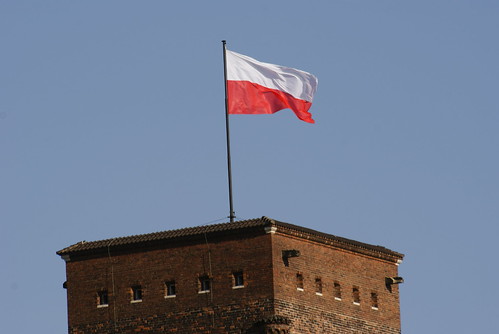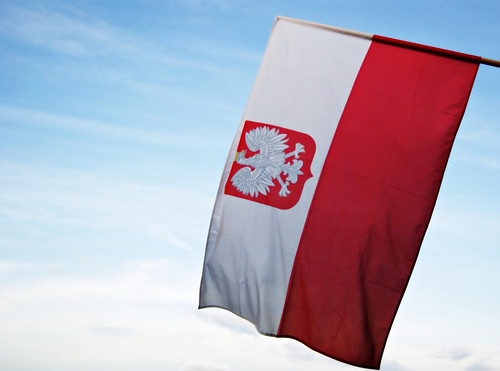The official Polish flag for general use consists simply of two horizontal fields of equal size, with the top one white and the bottom one red. The flag that features Poland’s white eagle set against a red shield on the white field is known as a “bandera” (ship’s flag or ensign). According to Polish flag tradition, it is meant to be flown by Polish ships at sea and by Polish diplomatic missions and other official institutions abroad.

Image by Szift on Flickr.com
Many Polish Americans, however, consider the eagle flag more distinctive and prefer it to fly from flag posts or display it at various functions.The colors of red (amaranth) and white began appearing on banners and flags in the 17th century, although they were still not the official national colors. The SEJM (assembly) introduced Polish national colors in 1831, but they were officially recognized as state colors until Poland regained her independence in 1919, when the white and red flag was first flown. Polish institutions and offices abroad and airports, harbors and merchant vessels fly the flag with the national emblem.

Image by roovuu on Flickr.com
Poland’s official crest is a white eagle (biały orzeł), its head poised to the right, and set against a red shield. The eagle first appeared on coins minted in the 12th century and subsequently on the heraldic seals of the Piast dynasty. Toward the end of the 13th century, during the reign of Przemysław II, the Polish eagle was depicted with a crown (korona) .Over the years, the Polish Eagle became a symbol recognized throughout the world. It is seen on flags, in Polish publications, on Polish American specialty items, and products imported from Poland.
Do następnego razu… (Till next time…)






